Check out our range of stock.
Didn't find what you like?
Send us a message
Found something out of stock?
Send us a message

15mm Brass Threaded Hexagon Nipple Pack of 10
$30.00

15mm Brass Threaded Hexagon Socket Pack of 5
$20.00

$5.00

With a random assortment of colours these are valves is a great tool for any aquarium as it will regulate airflow into the aquarium. An option of the single valve will increase or decrease the air on a single location. The T valve will split the air into two separate location. Great for when you want to push air on either end of your aquarium
$1.00
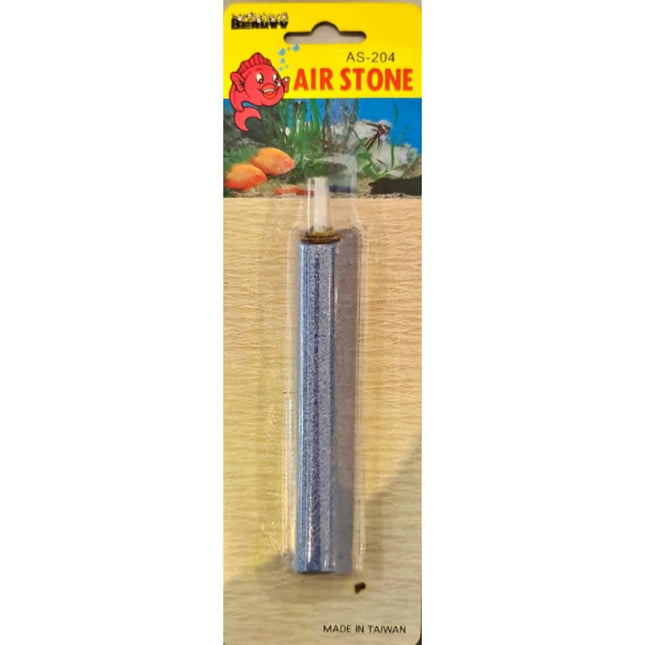
Air Stone 10cm long is a great way to add oxygen to your aquarium. This air stone is made from ceramic and comes in a 10cm long size. It produces tiny bubbles that provide oxygen to your aquarium and helps to keep your fish healthy and happy. The stone is easy to install in your tank and comes with a suction cup for easy attachment to the side of your tank. This air stone will help to keep your fish tank clean and oxygenated and provide a healthy, natural environment for your fish.
$5.00

An airline T joiner for aquarium is a small plastic accessory that is used to split an air supply line into two separate lines. It is typically used in aquarium setups that require multiple airstones or air-driven devices, such as sponge filters or air-driven protein skimmers. The T joiner is made of durable plastic and is easy to install, as it simply slides onto the air supply line. It helps to ensure an even distribution of air throughout the aquarium, and can be used in both freshwater and saltwater setups. Airline T joiners are a cost-effective and practical way to enhance the aeration and water movement in aquariums, which can help to improve the overall health and well-being of aquatic animals and plants.
$1.00

Air Y Joiner is aa tool to split the Airpump into 3. It's made from durable plastic
$1.00
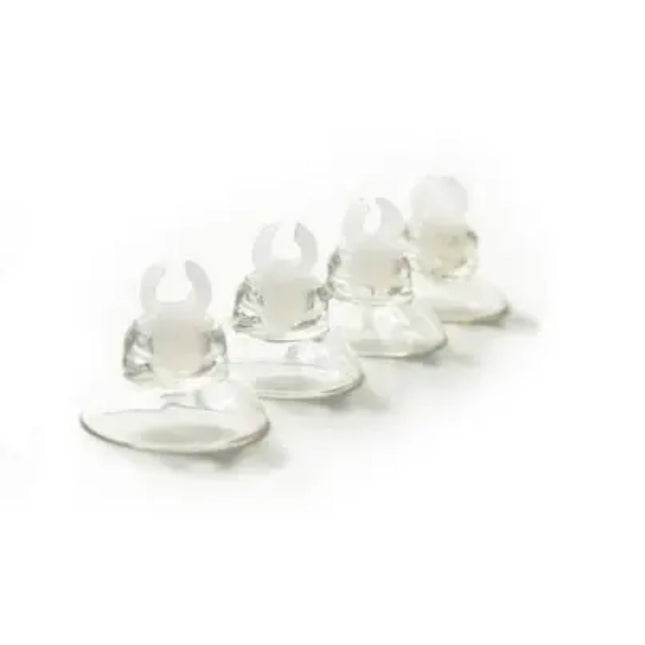
Have you had issues where your airline just drops out of the tank or worse it breaks the airstone? If you have these issues the airline suction cups are one of the best tools you can have. It will allow you to hold the airline into position. Please note the price is for one single item.
$2.50
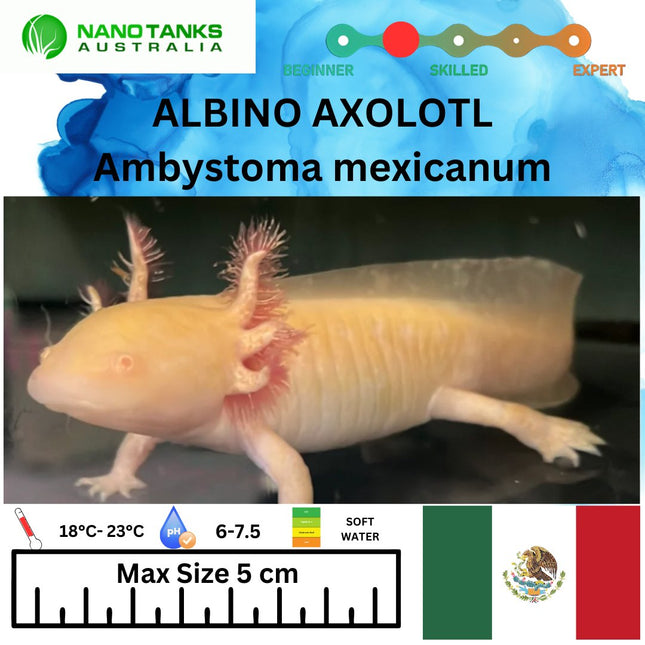
Axolotls: A Giant Salamander with a Superpower The Mexican walking fish The Axolotl is a fascinating creature rarely seen by people in the wild, descending from the tiger salamander Ambystoma tigrinum and indigenous to central Mexico for about 10,000 years. Axolotls are a newer species that evolved after the chaos and floods in North America after the younger dryas period, and so this creature gives us insights into an emergent species. Sadly, much of its suitable habitat has been drained due to human intervention. These two spring-fed lakes (lake Xochimilco and lake Chalco) along the southern edge of the Basin of Mexico has been reduced by 77% recently. Scientific research has discovered something amazing Did you know these Salamanders have superpowers? First, Axolotls are specially designed for camouflage. With dark-colored bodies and the ability to shift their hue a few shades lighter or darker as needed, they can easily blend in with leaves on trees! Pink and light-colored variations are bred only by humans to make for an interesting-looking pet. Axolotls are able to regenerate a new limb five times without even leaving scars – and do it in a matter of weeks. Also, the Axolotl can regenerate organs, jaws, and spines and can do this countless times while being entirely functional. Scientists want to understand the ability that Axolots inherently possess, so it is an extensively studied creature. To top it off, they say that this Axolotl has an innate superpower to resist cancer—1,000 times more than mammals. Indeed an amazing creature and a worthy critter for observation in the aquarium. Axolotl Size The Axolotl is a strange and fascinating creature that can grow up to 25cm. Axolotls are the fastest-growing frog-like creatures on earth! After reaching sexual maturity at 8 or so centimeters, most continue their growth until they reach about 20 cm long before stopping. Since Victorian times, they have been bred as pets but were only scientifically classified by scientists in 1859 when Mr. Charles Darwin gave them the funky name Axolotl Ambystoma Mexicanum because he found one near Mexico City while doing research. Diet In the wild, axolotls feed on snails, worms, crustaceans, and small fish. They can be fed a variety of brine shrimp or frozen food in captivity instead of wild food to avoid parasites that their natural prey could carry. In general, they do not need vitamins for healthy growth because they have a healthy appetite. However, it’s essential to ensure he has plenty of quality protein since his primary source would otherwise come from munching on other creatures. Adult axolotls appreciate a feed about once a week. One way to feed them is to place food with round-nosed forceps in the tank near where your animal lives, and you may also drop food into their water, as close to them as possible when they are active. If it seems like your Axolotl doesn’t eat much during daylight hours, try feeding it in the evening so uneaten food does not stay in the water. Axolotl Life Span There are few things as fascinating as axolotls. Strangely, Axolotls have been known to live past 20 years- but it is unusual (and almost unheard of) for one to make it over 10! Axolotl Housing A 60 litre reptile aquarium is the perfect size for one adult axolotl, but it can become messy due to constant waste. If you are looking for a 100+ litre tank instead, you will avoid this issue; in fact, I recommend doing so because as soon as you add in fish, it would be a messy affair. Ensure water parameters stay at an optimum level by filling the whole thing up and changing the water regularly, or else mold will start growing on anything inside! A filter will help maintain safe water parameters but beware of the conditions axolotls like. However, ensure that your tank has a spray bar or some other type of outlet to quickly and safely spread this water throughout. Axolotls do not tolerate strong flows so they need more delicate care than fish otherwise their health may suffer in ways from losing their appetite to developing stress-related diseases. Lighting and Temperature Axolotls do not require lighting, and new axolotls may be shy if kept in a brightly lighted tank. Lighting is for our viewing pleasure and the benefit of aquarium plants, not the Axolotls. This Salamander lives in habitats such as caves, amongst wood or vegetation. It would be wise to mimic this in the tank. Choose a plant-friendly bulb that does not produce excess light and heat above what is required for plants. Axolotls, like most amphibians, are cold-blooded and need warmer water temperatures to function. If you have a hot home temperature be wary! An axolotls ideal temperature range falls between 18°C – 24°C with anything higher than 24 ° C being potentially fatal if left unattended long enough. This will lead them to not eat due to it feeling uncomfortable from all the extra stress on their body just trying to keep themselves cool. Axolotl Aquarium Substrate The ideal substrate for axolotls is aquarium-safe sand-like Aqua Terrarium Sand. Unfortunately, axolotls have a bad habit of ingesting gravel and mouth-sized objects if available but can be prevented by using large pebbles instead. Anything the size of an axolotl’s head or larger will not end up in their stomach! Salamanders need a substrate in their environment, but Axolotls do not. Many people keep them without any type of substrate. It does look nice to have an aesthetic base for the aquarium; however, this can cause water parameters to change more quickly because there is no surface area on which beneficial bacteria grow. We recommend using our bio-filter balls in the shop, already packed full of beneficial bacteria. Many salamander owners use substrates as part of their natural habitat design while many axolotl enthusiasts enjoy using nothing at all! I love how they make my tank looks very clean with just plants and rocks scattered around the bottom. Axolotl Breeding Behaviour Axolotl mating starts with a waltz. After the male and female nudge one another’s urogenital opening called the cloaca, they take to dancing circles in what could almost be referred to as a ballroom dance. The male Axolotl then struts away while shimmying his tail like a hula dancer, luring the female to follow. As they step together and dance their way in unison, he drops a small capsule full of sperm called a spermatophore for her to pick up with her cloaca as soon she just skirts over it. Axolotls Common Health Problems A notable characteristic of axolotls is their regenerative powers. But this remarkable ability doesn’t protect them from all health issues. For example, unsanitary tank conditions can lead to viral or bacterial infections, the signs of which include lethargy and a lack of appetite. Plus, ammonia buildup from waste in the tank can be toxic if it occurs–likely due to its corrosive qualities on organic matter like gills and neural tissue alike! Moreover, axolotls with gravel in their tank that’s small enough to eat are prone to gastrointestinal obstructions. If your Axolotl experiences an obstruction, it will be sluggish and not want to eat much. And if you don’t promptly treat the problem, death can occur quickly. FAQ How do you pronounce Axolotl? - Axolotl is pronounced as ak·suh·laa·tl Are axolotls endangered? - Axolotls are considered a critically endangered species by the International Union for Conservation of Nature and Natural Resources. Their population has been declining due to human intervention, with their numbers dropping from 6000 individuals per square kilometer in 1998 to 100 just ten years later. A more recent survey found only 35 axolotls left within a single square kilometer in 2015! My Axolotols don't have legs? Sometimes Axolotls do bite each others' legs off. Given the right conditions they should regenerate within 2-3 months.
$150.00
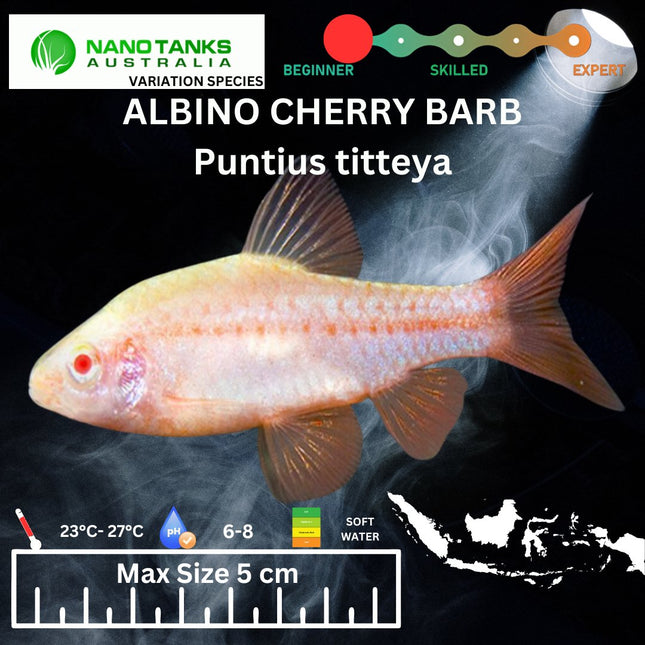
The Cherry Barb is found in heavily shaded streams and rivers in the Kelani to Nilwala basins of Sri Lanka. Feral populations of Cherry Barbs have also been found in Colombia and Mexico. They prefer areas of slow moving, shallow water with a bottom of silt and plenty of branches and leaf litter. In nature, this barb is an omnivore and feeds on diatoms, algae, invertebrates, and detritus. Cherry Barbs are very hardy little fish. They are great eaters and get along with most tankmates. Their water requirements are fairly easy to meet with regular partial changes. Provided with proper care, these little beauties make a great choice for the beginning fish keeper. Since they are omnivorous the Cherry Barb will generally eat all kinds of live, fresh, and flake foods. To keep a good balance, give them a high quality flake food every day. Feed brine shrimp (either live or frozen) or blood worms as a treat. Several small feedings a day are ideal, and at least one feeding a day is absolutely necessary. A general rule of thumb when offering food several times a day is to offer only what they can consume in 3 minutes or less at each feeding. When offering food just once a day, provide what they can eat in about 5 minutes. Cherry Barbs will swim in all parts of the tank, but especially like to take cover in planted areas. These very active fish will also need stretches of open areas for swimming. A small school will need at least a 40 litre aquarium. Provide good filtration and do regular water changes. These fish will do best and are most effectively displayed in tanks that simulate their natural habitat. They will appreciate an aquarium with lots of dense vegetation and floating plants where they can seek cover. Provide a dark substrate and an open area in the centre for swimming.
$12.00
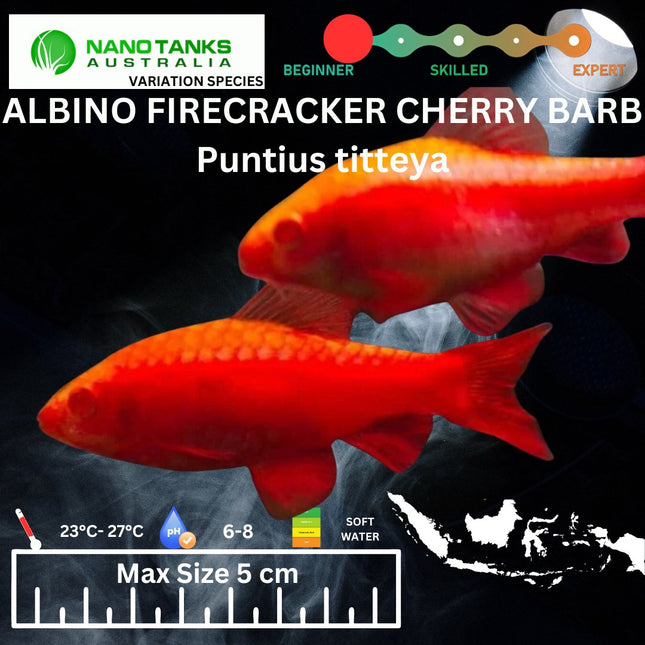
The Cherry Barb is found in heavily shaded streams and rivers in the Kelani to Nilwala basins of Sri Lanka. Feral populations of Cherry Barbs have also been found in Colombia and Mexico. They prefer areas of slow moving, shallow water with a bottom of silt and plenty of branches and leaf litter. In nature, this barb is an omnivore and feeds on diatoms, algae, invertebrates, and detritus. Cherry Barbs are very hardy little fish. They are great eaters and get along with most tankmates. Their water requirements are fairly easy to meet with regular partial changes. Provided with proper care, these little beauties make a great choice for the beginning fish keeper. Since they are omnivorous the Cherry Barb will generally eat all kinds of live, fresh, and flake foods. To keep a good balance, give them a high quality flake food every day. Feed brine shrimp (either live or frozen) or blood worms as a treat. Several small feedings a day are ideal, and at least one feeding a day is absolutely necessary. A general rule of thumb when offering food several times a day is to offer only what they can consume in 3 minutes or less at each feeding. When offering food just once a day, provide what they can eat in about 5 minutes. Cherry Barbs will swim in all parts of the tank, but especially like to take cover in planted areas. These very active fish will also need stretches of open areas for swimming. A small school will need at least a 40 litre aquarium. Provide good filtration and do regular water changes. These fish will do best and are most effectively displayed in tanks that simulate their natural habitat. They will appreciate an aquarium with lots of dense vegetation and floating plants where they can seek cover. Provide a dark substrate and an open area in the centre for swimming.
$20.00

Alternanthera Bettzickiana is a popular choice for beginners due to the fact that it's pretty easy to grow. Most red stem plants can prove difficult to get that vibrant red color without providing high CO2 and micronutrients. This plant will keep its vibrant red and pink hues with relative ease, but if nutrients and lighting are severely lacking, the leaves can dull out to an orange hue. It prefers high nitrates and high phosphates so dosing fertilizers such as UNS Plant Food will help speed up growth and keep coloration at its best. A nutrient-rich substrate is necessary when growing this plant. Notes: Alternanthera provides great coverage for sensitive species and are relatively easier choices for beginners who are looking for colored aquarium plants. Do not make drastic changes to the aquarium. Unstable parameters will result in melt and rotting of the aquarium plant. Please be sure to remove this plant from its pot. Remove the cotton surrounding the roots and plant into a quality substrate. For instructions on how to properly prep "potted" aquarium plants, click here. CO2 injection and quality aquarium soil will yield better growth. Please research appropriately to ensure your plant thrives. Family Name: Amaranthaceae Origin: Central/South America Height: 4-12” pH: 6.5-7.5 Care: Easy to Moderate Light: Medium to High Co2: Required Propagation: Cut stem and replant Growth rate: Moderate to Fast
$10.00
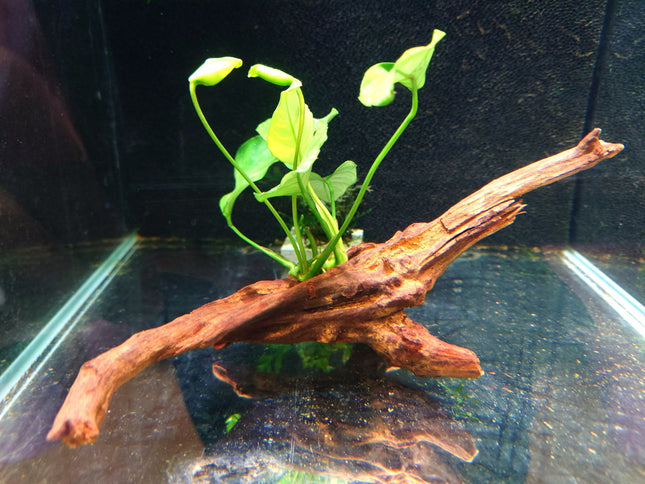
Hand Picked Nano Quan Wood or Dragon Stone with a single Anubias plant attached. Great for tanks less then 30cm Please note that the picture is only indicative. You will get it with more or less leaves.
$29.95

Anubias on Pots are a great addition to any aquarium. Being in a pot has its advantages. When you add your plants to a tank without substrate it doesn't need additional planting. However if you do have other substrates such as Gravel or Sand it can still work. However, for best results it is best to put it in Aquarium Soil or attached to a driftwood.
$25.00
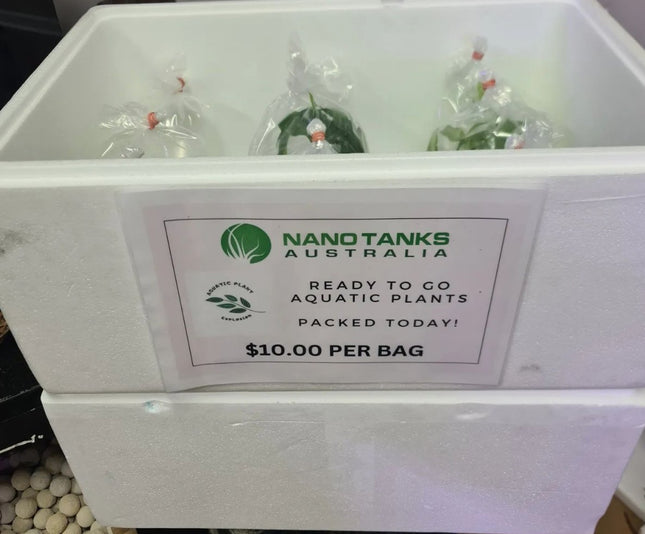
Assorted aquatic plants are a group of plants that are specifically adapted to grow in aquatic environments. These plants can be found in a variety of aquatic ecosystems, including freshwater ponds, streams, rivers, and lakes. Aquatic plants play a crucial role in maintaining the health and balance of aquatic ecosystems by providing oxygen to the water, absorbing excess nutrients, and providing habitat and food for aquatic animals. In the aquarium hobby, aquatic plants are often used to add visual interest and to help maintain good water quality by reducing the amount of harmful nitrogen compounds in the water. Assorted aquatic plants are available in a wide variety of shapes, sizes, and colors. Some of the most common types of aquatic plants include hornwort, Java moss, Anubias, and Cryptocoryne. Each type of plant has its own unique characteristics and requirements for growth, so it's important to research the specific needs of the plants you plan to keep in your aquarium. When keeping assorted aquatic plants in an aquarium, it's important to provide them with the right conditions, including the right type of substrate, adequate light, and the right temperature and water chemistry. In addition, it's important to keep the aquarium well-maintained and to provide regular water changes to ensure that the plants receive the nutrients they need to grow and thrive. Overall, assorted aquatic plants are an important and attractive addition to any aquarium, and they can provide a beautiful and natural underwater environment for your fish and other aquatic animals. Whether you are a seasoned aquarium hobbyist or a beginner, there is sure to be a type of aquatic plant that is right for your aquarium. These plants are packed fresh daily and a great addition for any tank!
$10.00
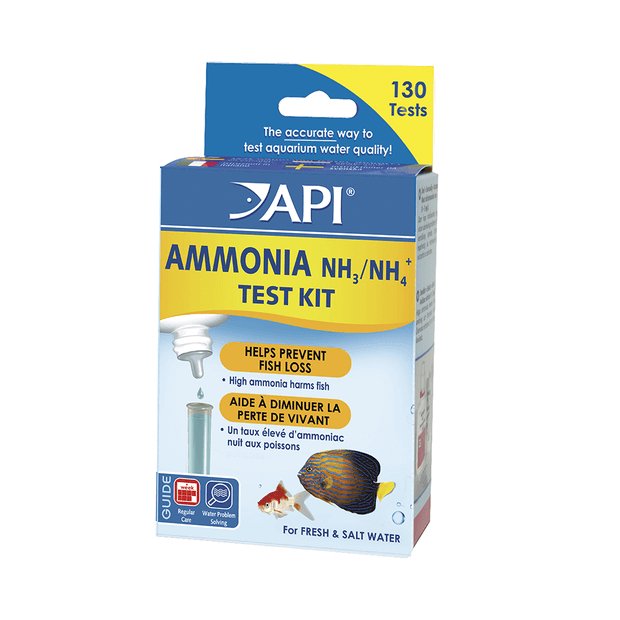
Test your aquarium water and make sure your fish are safe with the API Ammonia Test Kit. This comprehensive kit helps detect low levels of ammonia, which can cause gill damage, lethargy, and death in fish. With its easy-to-use liquid dropper and clear instructions, checking your aquarium water has never been easier.
$34.95
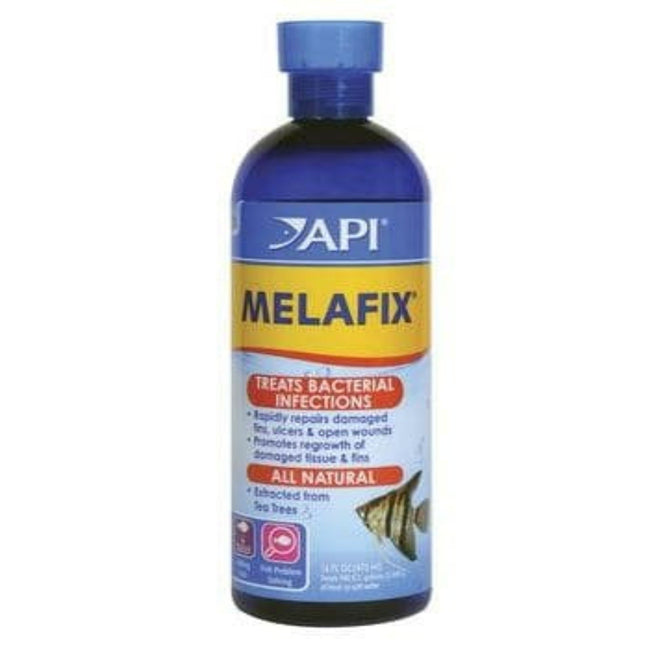
API® Melafix is an all-natural antibacterial treatment that works to treat infections in fish. Common bacterial infections are open wounds and abrasions, tail rot, eye cloud, and mouth fungus. API Melafix also promotes regrowth of damaged fins and tissue. Product may be used when adding fish to an aquarium – particularly to smooth the transition from store to home – and if an infection is suspected, but not yet diagnosed. Some fish bought in pet stores are already carrying diseases at the time of purchase, which may be difficult to detect in its early stages. API Melafix will not adversely affect the biological filter, alter the pH, or discolor water. It is safe for use in freshwater, saltwater, and reef aquariums, and in aquariums with live plants. Dose for the recommended amount of time as directed on label, and in accordance with the size of your aquarium. DIRECTIONS FOR USE: Add 5 ml per 10 gallons of aquarium water. Dose daily for 7 days. After 7 days, make a 25% water change.
$17.00 - $40.00
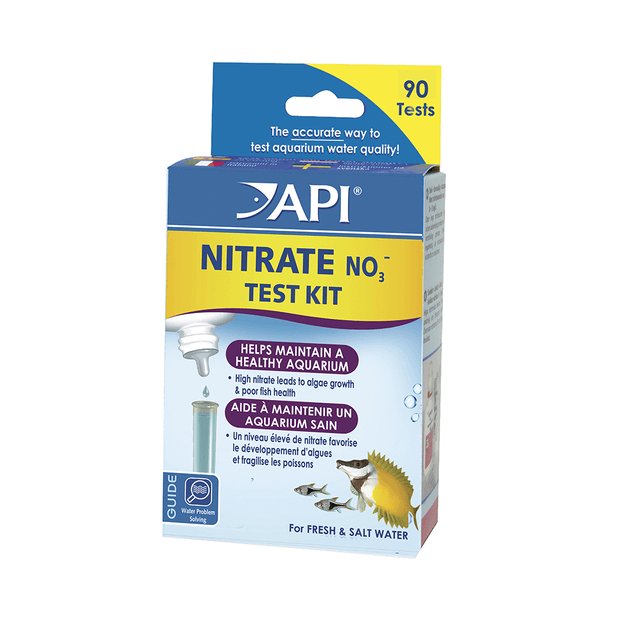
The API Nitrate Test Kit is an accurate and reliable way to measure nitrate levels in fresh and salt water tanks. With its easy-to-use system and precise results, the kit provides a complete and detailed understanding of nitrate concentrations. Rely on it to get the most out of your aquatic environment.
$34.95

Apistogramma BITAENIATA SHISHITA, a beautiful freshwater fish. With its vibrant colors and unique markings, this species is a popular choice for aquarium enthusiasts. With its peaceful nature and expert adaptability, it's the perfect addition to any aquatic environment.
$60.00
If you need help with your tank this is the service for you
$0.00
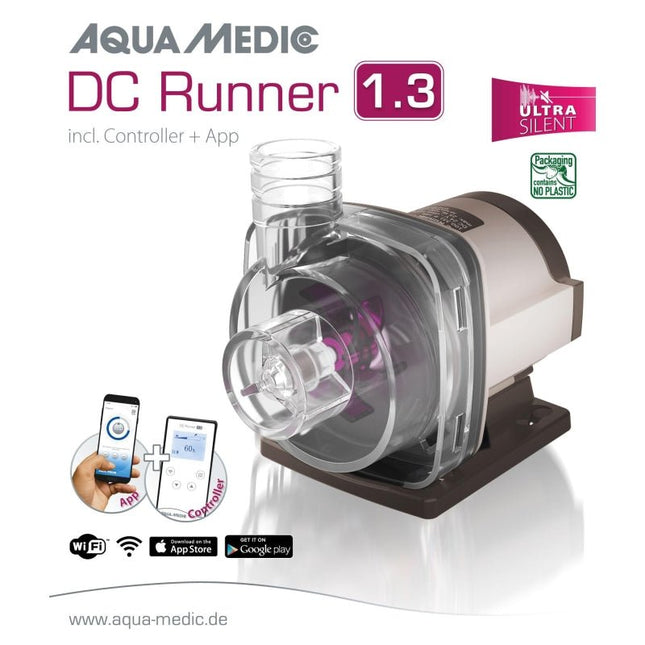
ULTRA SILENT due to Optimized Control Electronics. Circulation pump suitable for use in salt or freshwater aquaria. Includes controller for adjusting the water output. 0–10V-connection for external control. Rugged pump housing. Power-saving D/C motor 24 Volt. High efficiency. Polished ceramic shaft and bearings for quiet operation and low maintenance. Submerged and non-submerged use is possible. Including pre-filter basket. DC Runner 1.2: Output 8 step adjustable up to 1200 L/H. Maximum Head 1.5mtrs. Max Power 12w. L125 x W60 x H85mm. Hose fitting suction side 25mm. Hose fitting pressure side 20mm. 2 years warranty.
$399.00
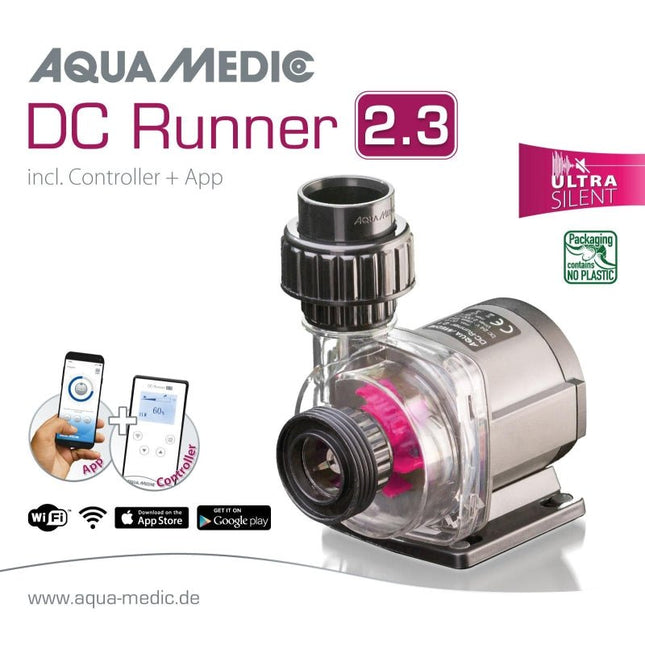
ULTRA SILENT due to Optimized Control Electronics. Circulation pump suitable for use in salt or freshwater aquaria. Includes controller for adjusting the water output. 0–10V-connection for external control. Rugged pump housing. Power-saving D/C motor 24 Volt. High efficiency. Polished ceramic shaft and bearings for quiet operation and low maintenance. Submerged and non-submerged use is possible. Including pre-filter basket and stepped hose fittings. DC Runner 2.2: Output 8 step adjustable up to 2000 L/H. Maximum Head 2.20 mtrs. Max Power 20w. L135 x W67 x H67mm. Stepped hose fitting suction side 25mm/20mm. Stepped hose fitting pressure side 25mm/20mm. 2 year warranty.
$479.00

ULTRA SILENT due to Optimized Control Electronics. Circulation pump suitable for use in salt or freshwater aquaria. Includes controller for adjusting the water output. 0–10V-connection for external control. Rugged pump housing. Power-saving D/C motor 24 Volt. High efficiency. Polished ceramic shaft and bearings for quiet operation and low maintenance. Submerged and non-submerged use is possible. Including pre-filter basket and stepped hose fittings. DC Runner 3.2: Output 8 step adjustable up to 3000 L/H. Maximum Head 2.70 mtrs. Max Power 25w. L200 x W90 x H120mm. Stepped hose fitting suction side 32mm/25mm. Stepped hose fitting pressure side 25mm/20mm. 2 year warranty.
$529.00

ULTRA SILENT due to Optimized Control Electronics. Circulation pump suitable for use in salt or freshwater aquaria. Includes controller for adjusting the water output. 0–10V-connection for external control. Rugged pump housing. Power-saving D/C motor 24 Volt. High efficiency. Polished ceramic shaft and bearings for quiet operation and low maintenance. Submerged and non-submerged use is possible. Including pre-filter basket and stepped hose fittings. DC Runner 5.3: Output 8 step adjustable up to 5000 L/H. Maximum Head 3.50 mtrs. Max Power 40w. L190 x W105 x H130mm. Stepped hose fitting suction side 32mm/25mm. Stepped hose fitting pressure side 32mm/25mm. 2 year warranty.
$499.00
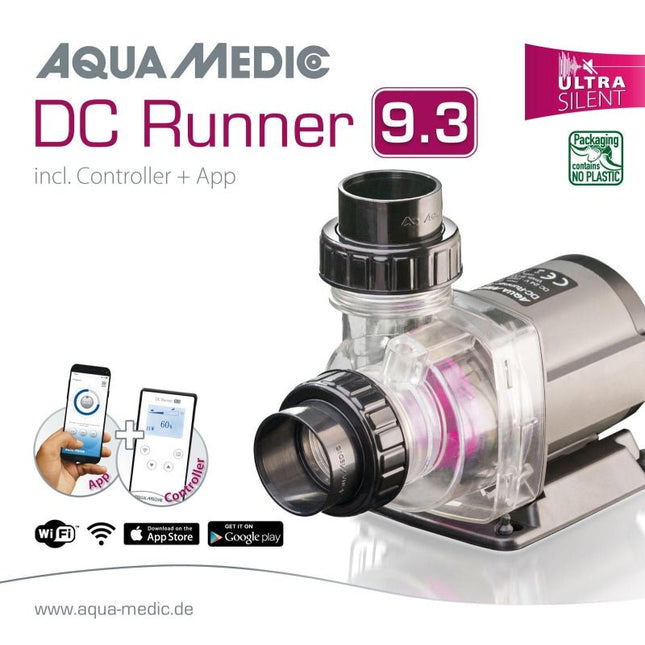
ULTRA SILENT due to Optimized Control Electronics. Circulation pump suitable for use in salt or freshwater aquaria. Includes controller for adjusting the water output. 0–10V-connection for external control. Rugged pump housing. Power-saving D/C motor 24 Volt. High efficiency. Polished ceramic shaft and bearings for quiet operation and low maintenance. Submerged and non-submerged use is possible. Including stepped hose fittings. DC Runner 9.3: Output 8 step adjustable up to 9000 L/H. Maximum Head 4.80 mtrs. Max Power 65w. L200 x W105 x H180mm. Stepped hose fitting suction side 40mm/32mm. Stepped hose fitting pressure side 40mm/32mm. 2 year warranty.
$779.00
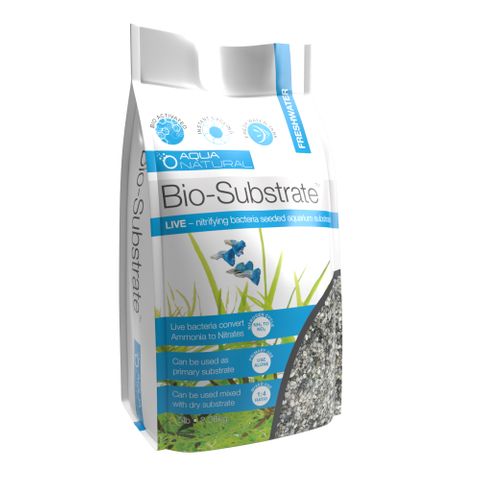
Aqua Natural Substrates All Aqua Natural gravel or substrates are 100% natural, sustainably sourced, triple washed and kiln dried. Our meticulously graded gravels and sands are the perfect natural substrates for any aquarium including planted tanks. Our high quality products create natural beauty combined with large surface areas for beneficial bacteria colonies and easy cleaning. Nitrifying Bacteria Pack contains bio activated live nitrifying bacteria to either use as a primary substrate or mix with substrate for a healthy aquarium. Contains a patented blend of live nitrosomas and nitrobacter bacteria which break down and convert harmful ammonia, into nitrates. Directions for use: PRIMARY (not mixed with Dry Substrate) Usage Calculator: Use 1lb (450g) of Bio-Substrate for every 1 gallons (3.8 litres) of water. • DO NOT rinse before use. • Spread substrate and fill with water slowly. Avoid stirring up the substrate. • Once the tank is filled, start your filter. Any cloudy appearance should clear over time. MIXED (mixed with Dry Substrate) Usage Calculator: Use 1lb (450g) of mixed LIVE Bio-Substrate and DRY Substrate for every 1 gallons (3.8 litres) of water. Mixing ratio is 1:4 (1 LIVE to 4 DRY). • DO NOT rinse before use. • Mix Bio-Substrate and Dry Substrate thoroughly. • Now spread mixed substrate and fill with water slowly. Avoid stirring up the substrate. • Once the tank is filled, start your filter. • Any cloudy appearance should clear over time. LIVE nitrosomas and nitrobacter bacteria are harmless to marine life. Use with any corresponding Dry Aqua Natural
$14.00
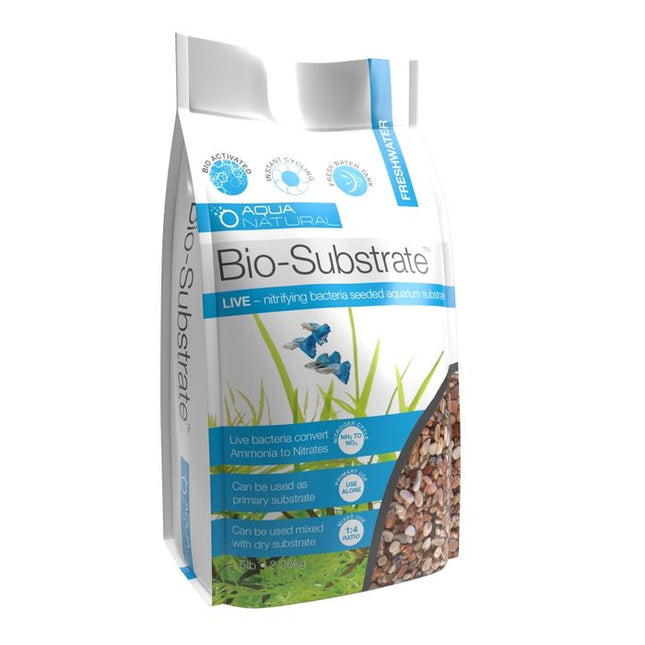
Aqua Natural Substrates All Aqua Natural gravel or substrates are 100% natural, sustainably sourced, triple washed and kiln dried. Our meticulously graded gravels and sands are the perfect natural substrates for any aquarium including planted tanks. Our high quality products create natural beauty combined with large surface areas for beneficial bacteria colonies and easy cleaning. Nitrifying Bacteria Pack contains bio activated live nitrifying bacteria to either use as a primary substrate or mix with substrate for a healthy aquarium. Contains a patented blend of live nitrosomas and nitrobacter bacteria which break down and convert harmful ammonia, into nitrates. Directions for use: PRIMARY (not mixed with Dry Substrate) Usage Calculator: Use 1lb (450g) of Bio-Substrate for every 1 gallons (3.8 litres) of water. • DO NOT rinse before use. • Spread substrate and fill with water slowly. Avoid stirring up the substrate. • Once the tank is filled, start your filter. Any cloudy appearance should clear over time. MIXED (mixed with Dry Substrate) Usage Calculator: Use 1lb (450g) of mixed LIVE Bio-Substrate and DRY Substrate for every 1 gallons (3.8 litres) of water. Mixing ratio is 1:4 (1 LIVE to 4 DRY). • DO NOT rinse before use. • Mix Bio-Substrate and Dry Substrate thoroughly. • Now spread mixed substrate and fill with water slowly. Avoid stirring up the substrate. • Once the tank is filled, start your filter. • Any cloudy appearance should clear over time. LIVE nitrosomas and nitrobacter bacteria are harmless to marine life. Use with any corresponding Dry Aqua Natural
$14.00
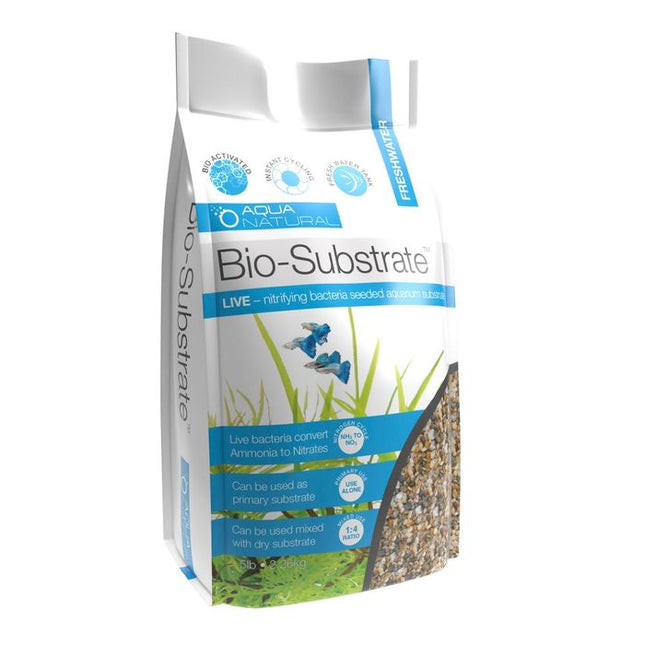
Aqua Natural Substrates All Aqua Natural gravel or substrates are 100% natural, sustainably sourced, triple washed and kiln dried. Our meticulously graded gravels and sands are the perfect natural substrates for any aquarium including planted tanks. Our high quality products create natural beauty combined with large surface areas for beneficial bacteria colonies and easy cleaning. Nitrifying Bacteria Pack contains bio activated live nitrifying bacteria to either use as a primary substrate or mix with substrate for a healthy aquarium. Contains a patented blend of live nitrosomas and nitrobacter bacteria which break down and convert harmful ammonia, into nitrates. Directions for use: PRIMARY (not mixed with Dry Substrate) Usage Calculator: Use 1lb (450g) of Bio-Substrate for every 1 gallons (3.8 litres) of water. • DO NOT rinse before use. • Spread substrate and fill with water slowly. Avoid stirring up the substrate. • Once the tank is filled, start your filter. Any cloudy appearance should clear over time. MIXED (mixed with Dry Substrate) Usage Calculator: Use 1lb (450g) of mixed LIVE Bio-Substrate and DRY Substrate for every 1 gallons (3.8 litres) of water. Mixing ratio is 1:4 (1 LIVE to 4 DRY). • DO NOT rinse before use. • Mix Bio-Substrate and Dry Substrate thoroughly. • Now spread mixed substrate and fill with water slowly. Avoid stirring up the substrate. • Once the tank is filled, start your filter. • Any cloudy appearance should clear over time. LIVE nitrosomas and nitrobacter bacteria are harmless to marine life. Use with any corresponding Dry Aqua Natural
$14.00 - $48.00
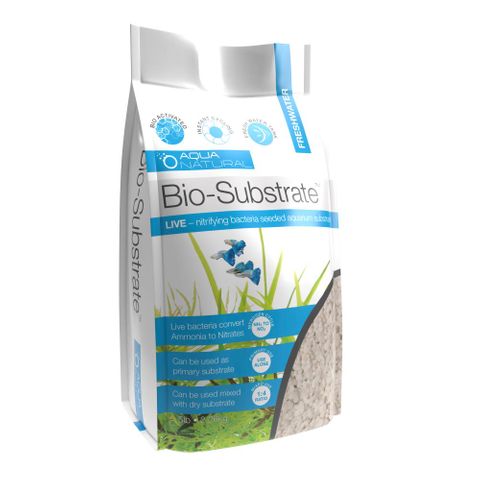
Aqua Natural Substrates All Aqua Natural gravel or substrates are 100% natural, sustainably sourced, triple washed and kiln dried. Our meticulously graded gravels and sands are the perfect natural substrates for any aquarium including planted tanks. Our high quality products create natural beauty combined with large surface areas for beneficial bacteria colonies and easy cleaning. Nitrifying Bacteria Pack contains bio activated live nitrifying bacteria to either use as a primary substrate or mix with substrate for a healthy aquarium. Contains a patented blend of live nitrosomas and nitrobacter bacteria which break down and convert harmful ammonia, into nitrates. Directions for use: PRIMARY (not mixed with Dry Substrate) Usage Calculator: Use 1lb (450g) of Bio-Substrate for every 1 gallons (3.8 litres) of water. • DO NOT rinse before use. • Spread substrate and fill with water slowly. Avoid stirring up the substrate. • Once the tank is filled, start your filter. Any cloudy appearance should clear over time. MIXED (mixed with Dry Substrate) Usage Calculator: Use 1lb (450g) of mixed LIVE Bio-Substrate and DRY Substrate for every 1 gallons (3.8 litres) of water. Mixing ratio is 1:4 (1 LIVE to 4 DRY). • DO NOT rinse before use. • Mix Bio-Substrate and Dry Substrate thoroughly. • Now spread mixed substrate and fill with water slowly. Avoid stirring up the substrate. • Once the tank is filled, start your filter. • Any cloudy appearance should clear over time. LIVE nitrosomas and nitrobacter bacteria are harmless to marine life. Use with any corresponding Dry Aqua Natural
$14.00
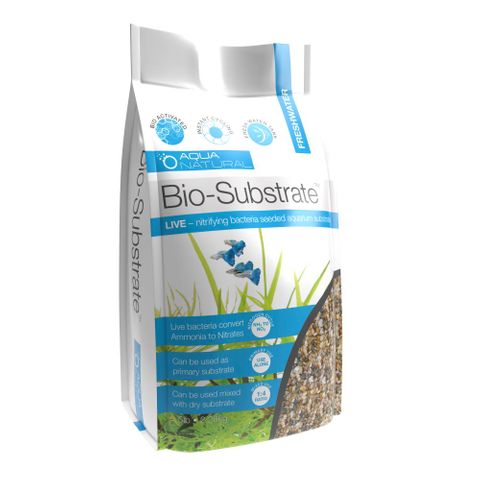
Aqua Natural Substrates All Aqua Natural gravel or substrates are 100% natural, sustainably sourced, triple washed and kiln dried. Our meticulously graded gravels and sands are the perfect natural substrates for any aquarium including planted tanks. Our high quality products create natural beauty combined with large surface areas for beneficial bacteria colonies and easy cleaning. Nitrifying Bacteria Pack contains bio activated live nitrifying bacteria to either use as a primary substrate or mix with substrate for a healthy aquarium. Contains a patented blend of live nitrosomas and nitrobacter bacteria which break down and convert harmful ammonia, into nitrates. Directions for use: PRIMARY (not mixed with Dry Substrate) Usage Calculator: Use 1lb (450g) of Bio-Substrate for every 1 gallons (3.8 litres) of water. • DO NOT rinse before use. • Spread substrate and fill with water slowly. Avoid stirring up the substrate. • Once the tank is filled, start your filter. Any cloudy appearance should clear over time. MIXED (mixed with Dry Substrate) Usage Calculator: Use 1lb (450g) of mixed LIVE Bio-Substrate and DRY Substrate for every 1 gallons (3.8 litres) of water. Mixing ratio is 1:4 (1 LIVE to 4 DRY). • DO NOT rinse before use. • Mix Bio-Substrate and Dry Substrate thoroughly. • Now spread mixed substrate and fill with water slowly. Avoid stirring up the substrate. • Once the tank is filled, start your filter. • Any cloudy appearance should clear over time. LIVE nitrosomas and nitrobacter bacteria are harmless to marine life. Use with any corresponding Dry Aqua Natural
$14.00
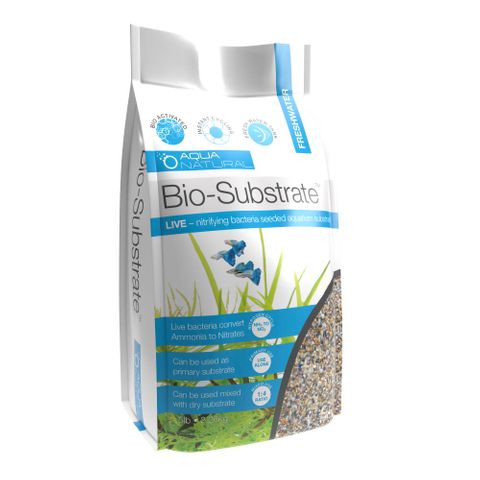
Aqua Natural Substrates All Aqua Natural gravel or substrates are 100% natural, sustainably sourced, triple washed and kiln dried. Our meticulously graded gravels and sands are the perfect natural substrates for any aquarium including planted tanks. Our high quality products create natural beauty combined with large surface areas for beneficial bacteria colonies and easy cleaning. Nitrifying Bacteria Pack contains bio activated live nitrifying bacteria to either use as a primary substrate or mix with substrate for a healthy aquarium. Contains a patented blend of live nitrosomas and nitrobacter bacteria which break down and convert harmful ammonia, into nitrates. Directions for use: PRIMARY (not mixed with Dry Substrate) Usage Calculator: Use 1lb (450g) of Bio-Substrate for every 1 gallons (3.8 litres) of water. • DO NOT rinse before use. • Spread substrate and fill with water slowly. Avoid stirring up the substrate. • Once the tank is filled, start your filter. Any cloudy appearance should clear over time. MIXED (mixed with Dry Substrate) Usage Calculator: Use 1lb (450g) of mixed LIVE Bio-Substrate and DRY Substrate for every 1 gallons (3.8 litres) of water. Mixing ratio is 1:4 (1 LIVE to 4 DRY). • DO NOT rinse before use. • Mix Bio-Substrate and Dry Substrate thoroughly. • Now spread mixed substrate and fill with water slowly. Avoid stirring up the substrate. • Once the tank is filled, start your filter. • Any cloudy appearance should clear over time. LIVE nitrosomas and nitrobacter bacteria are harmless to marine life. Use with any corresponding Dry Aqua Natural
$14.00
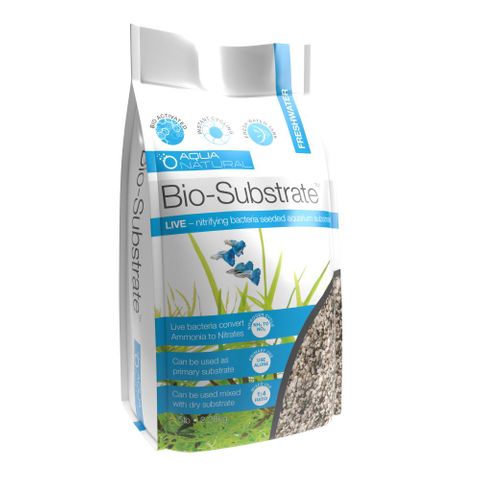
Aqua Natural Substrates All Aqua Natural gravel or substrates are 100% natural, sustainably sourced, triple washed and kiln dried. Our meticulously graded gravels and sands are the perfect natural substrates for any aquarium including planted tanks. Our high quality products create natural beauty combined with large surface areas for beneficial bacteria colonies and easy cleaning. Nitrifying Bacteria Pack contains bio activated live nitrifying bacteria to either use as a primary substrate or mix with substrate for a healthy aquarium. Contains a patented blend of live nitrosomas and nitrobacter bacteria which break down and convert harmful ammonia, into nitrates. Directions for use: PRIMARY (not mixed with Dry Substrate) Usage Calculator: Use 1lb (450g) of Bio-Substrate for every 1 gallons (3.8 litres) of water. • DO NOT rinse before use. • Spread substrate and fill with water slowly. Avoid stirring up the substrate. • Once the tank is filled, start your filter. Any cloudy appearance should clear over time. MIXED (mixed with Dry Substrate) Usage Calculator: Use 1lb (450g) of mixed LIVE Bio-Substrate and DRY Substrate for every 1 gallons (3.8 litres) of water. Mixing ratio is 1:4 (1 LIVE to 4 DRY). • DO NOT rinse before use. • Mix Bio-Substrate and Dry Substrate thoroughly. • Now spread mixed substrate and fill with water slowly. Avoid stirring up the substrate. • Once the tank is filled, start your filter. • Any cloudy appearance should clear over time. LIVE nitrosomas and nitrobacter bacteria are harmless to marine life. Use with any corresponding Dry Aqua Natural
$12.00

Aqua Natural Substrates All Aqua Natural gravel or substrates are 100% natural, sustainably sourced, triple washed and kiln dried. Our meticulously graded gravels and sands are the perfect natural substrates for any aquarium including planted tanks. Our high quality products create natural beauty combined with large surface areas for beneficial bacteria colonies and easy cleaning. Nitrifying Bacteria Pack contains bio activated live nitrifying bacteria to either use as a primary substrate or mix with substrate for a healthy aquarium. Contains a patented blend of live nitrosomas and nitrobacter bacteria which break down and convert harmful ammonia, into nitrates. Directions for use: PRIMARY (not mixed with Dry Substrate) Usage Calculator: Use 1lb (450g) of Bio-Substrate for every 1 gallons (3.8 litres) of water. • DO NOT rinse before use. • Spread substrate and fill with water slowly. Avoid stirring up the substrate. • Once the tank is filled, start your filter. Any cloudy appearance should clear over time. MIXED (mixed with Dry Substrate) Usage Calculator: Use 1lb (450g) of mixed LIVE Bio-Substrate and DRY Substrate for every 1 gallons (3.8 litres) of water. Mixing ratio is 1:4 (1 LIVE to 4 DRY). • DO NOT rinse before use. • Mix Bio-Substrate and Dry Substrate thoroughly. • Now spread mixed substrate and fill with water slowly. Avoid stirring up the substrate. • Once the tank is filled, start your filter. • Any cloudy appearance should clear over time. LIVE nitrosomas and nitrobacter bacteria are harmless to marine life. Use with any corresponding Dry Aqua Natural
$14.00
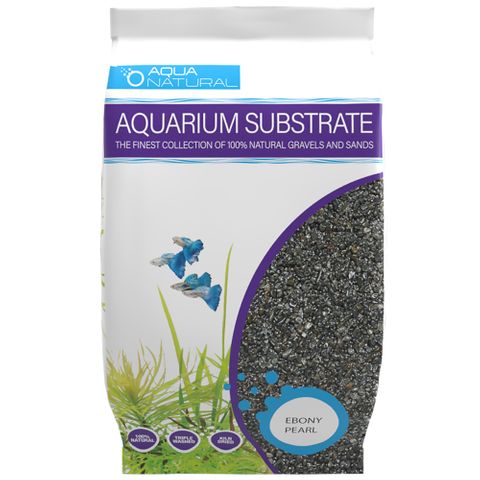
Granule Size: 2-4mm The darkest pebble on the market from the rivers of New Zealand we bring you Ebony. Ebony Pearl is a naturally smooth pebble sourced from New Zealand Southland's east coast beaches. Its pebbles are smooth and round or oval and have a get black look when wet. This pebble gives a tropical beach feel to any aquarium and is extremely unique. Aquarium safe Reptile safe Pure New Zealand Beauty Triple Washed
$20.00 - $35.00

Granule Size: 2-4mm The soft green and greys of the New Zealand Silver Fern. Fern Pearl is a naturally smooth pebble sourced from New Zealand Southland's east coast beaches. Its pebbles are smooth and round or oval and have a soft white colour with greens, blues and greys sprinkled in the background. This pebble gives a tropical beach feel to any aquarium and is extremely unique. Aquarium safe Reptile safe Pure New Zealand Beauty Triple Washed
$20.00 - $35.00
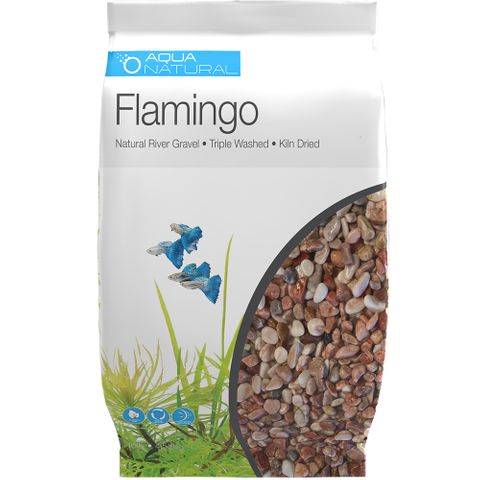
Granule Size: 2-4mm The soft green and greys of the New Zealand Silver Fern. Flamingo is a naturally smooth pebble sourced from New Zealand Southland's east coast beaches. Its pebbles are smooth and round or oval and have a soft white colour with greens, blues and greys sprinkled in the background. This pebble gives a tropical beach feel to any aquarium and is extremely unique. Aquarium safe Reptile safe Pure New Zealand Beauty Triple Washed
$20.00 - $35.00
You have seen 36 out of 931 products